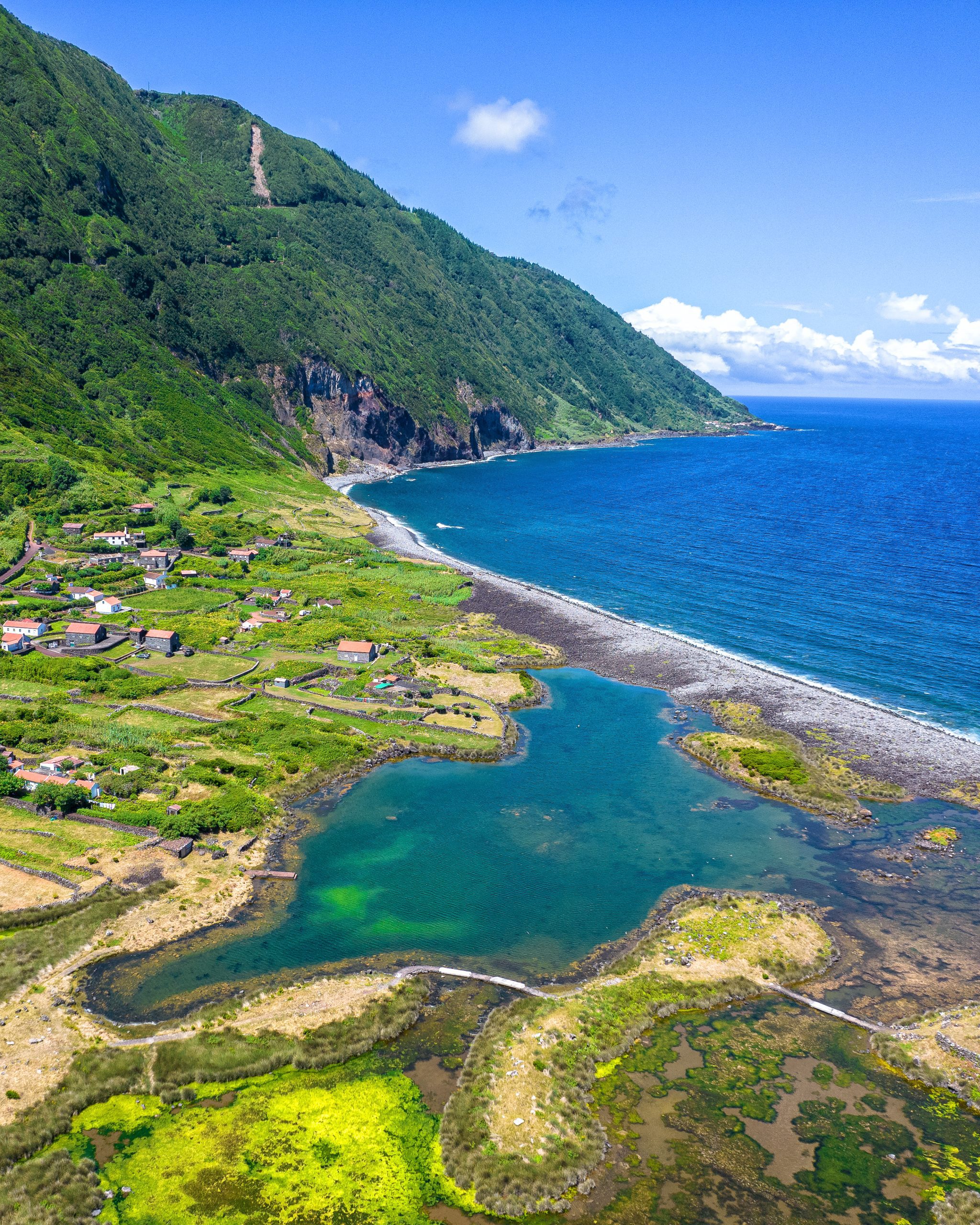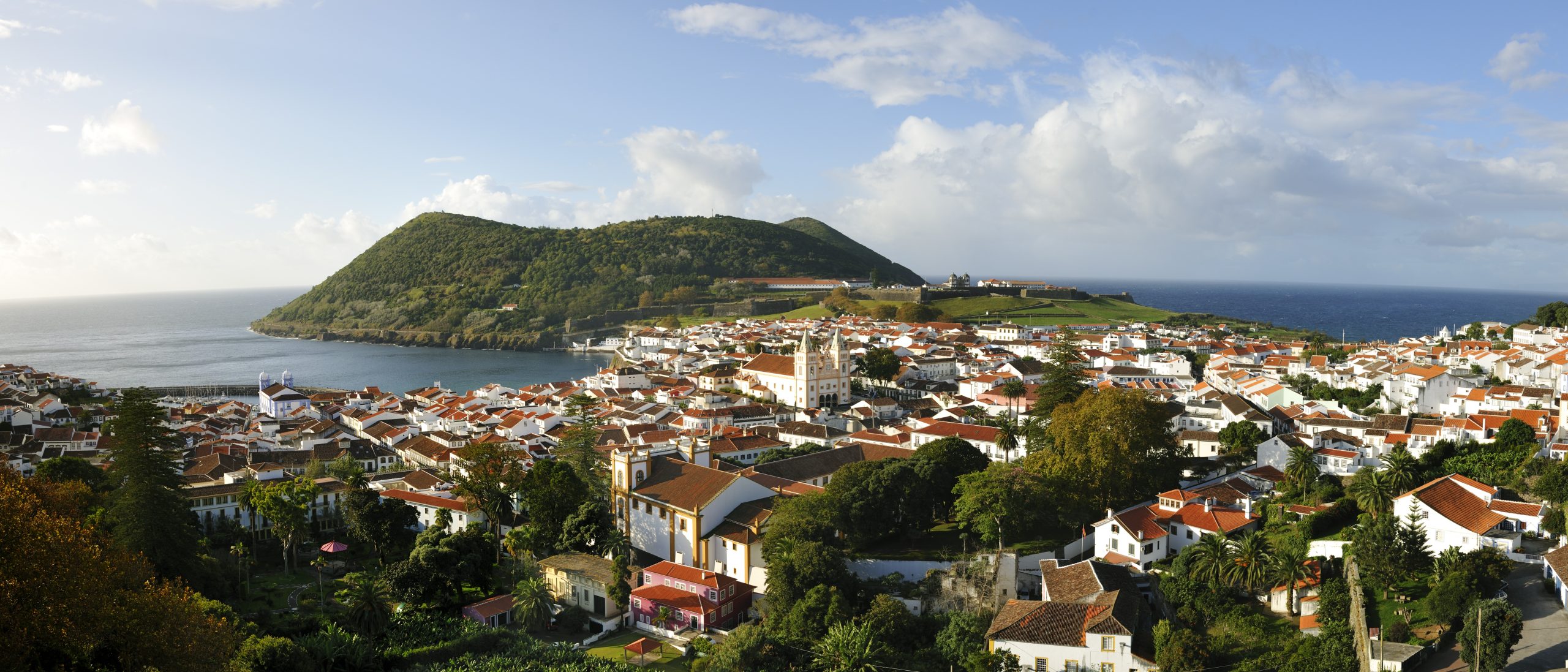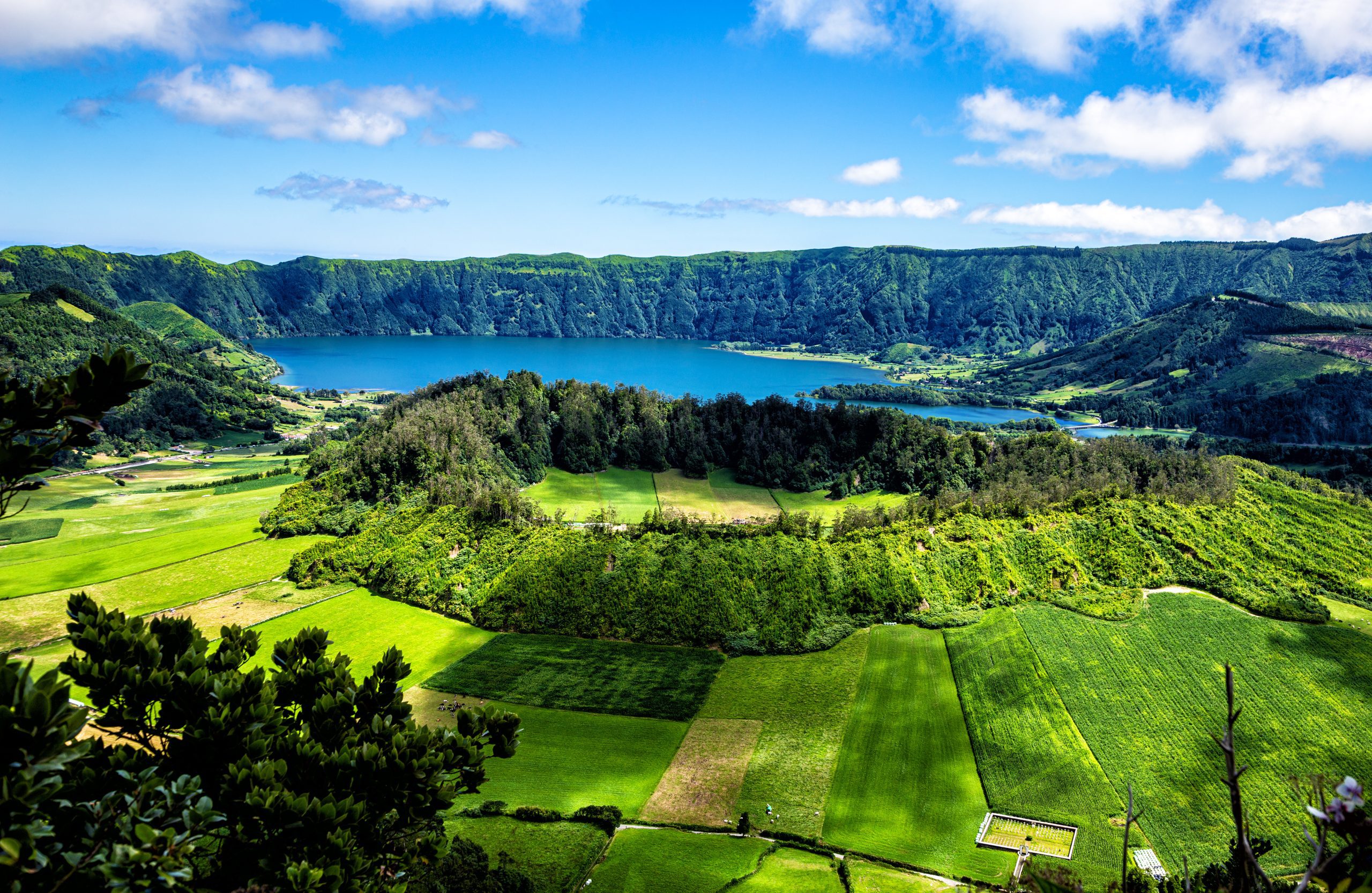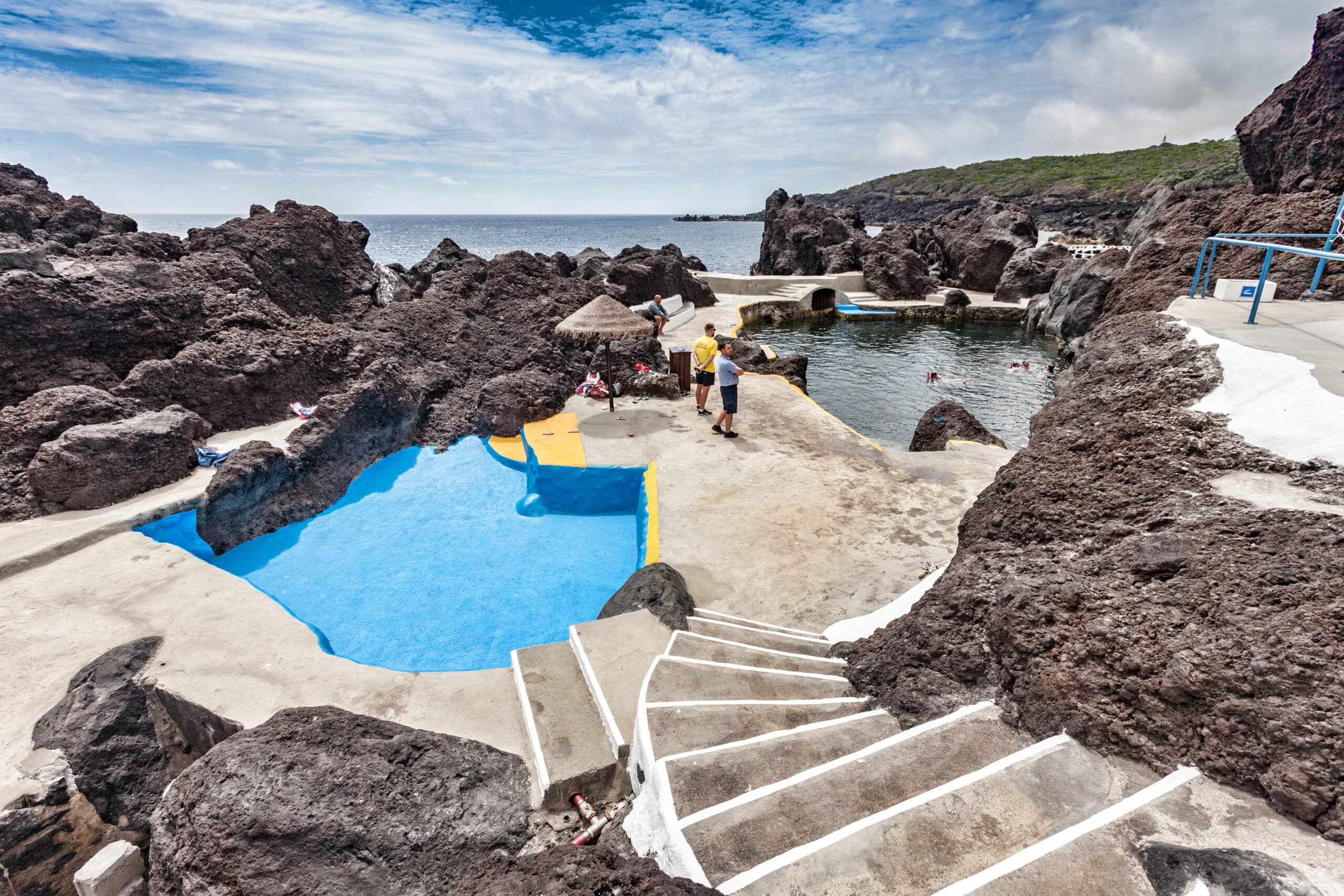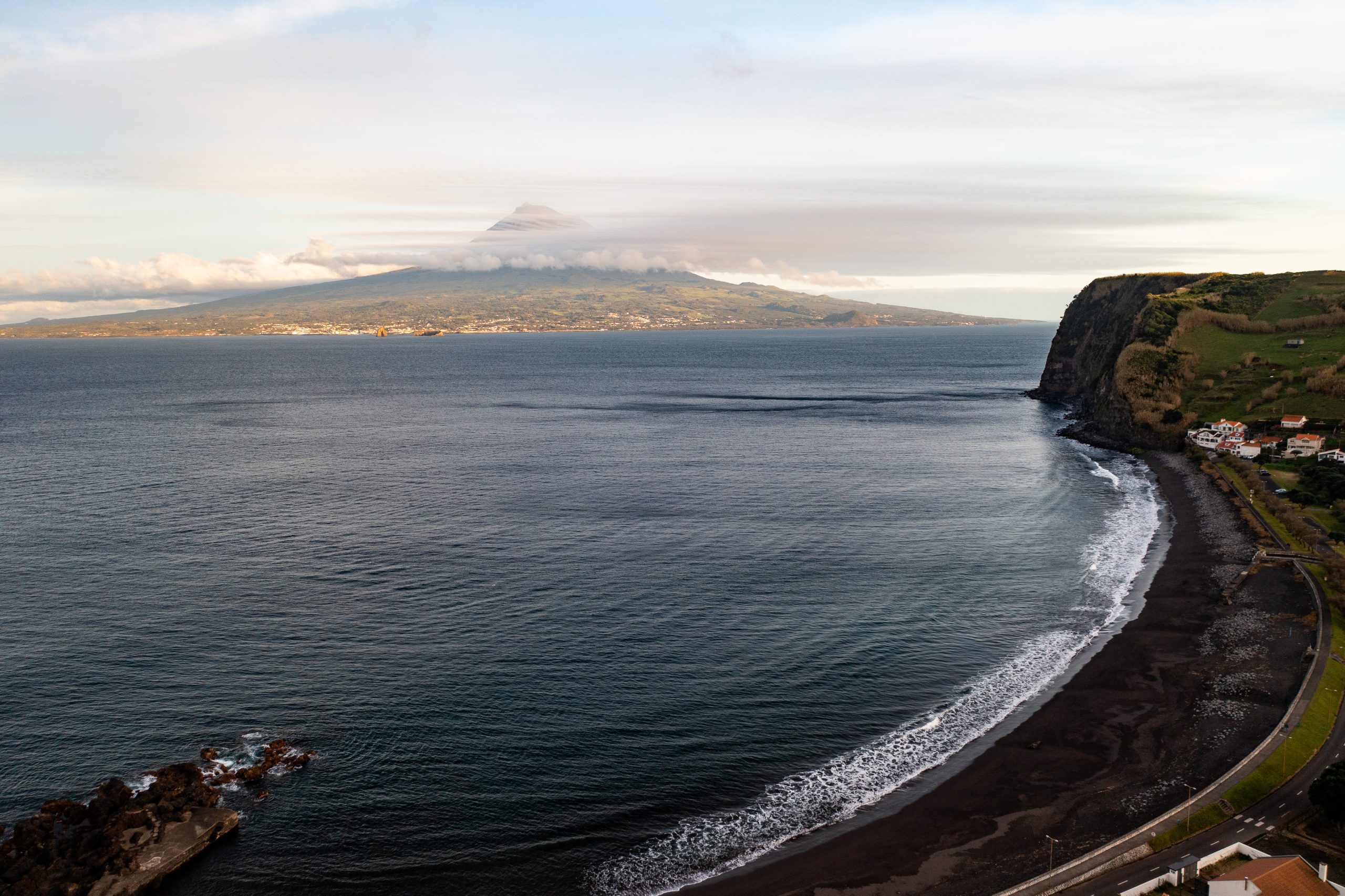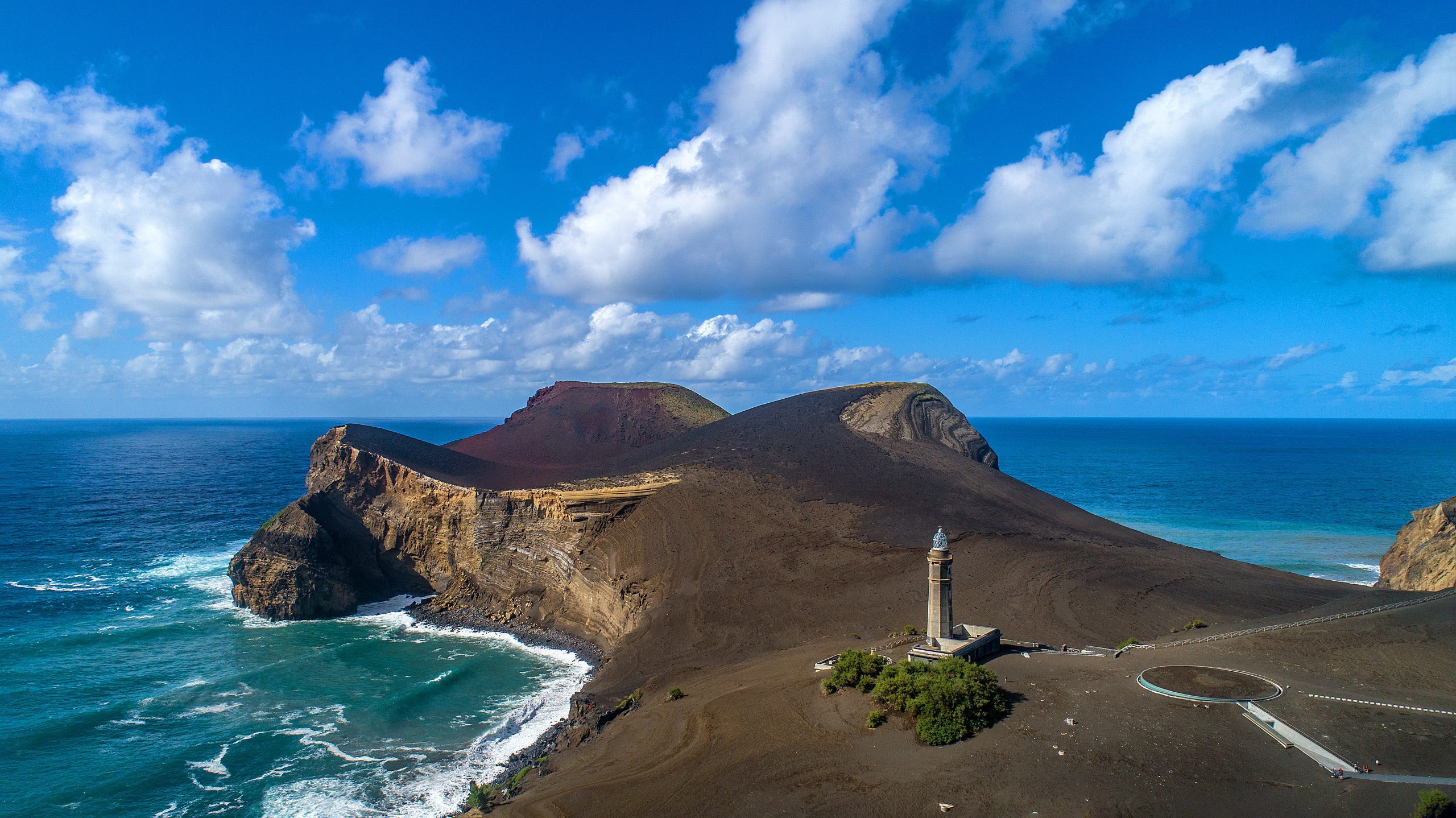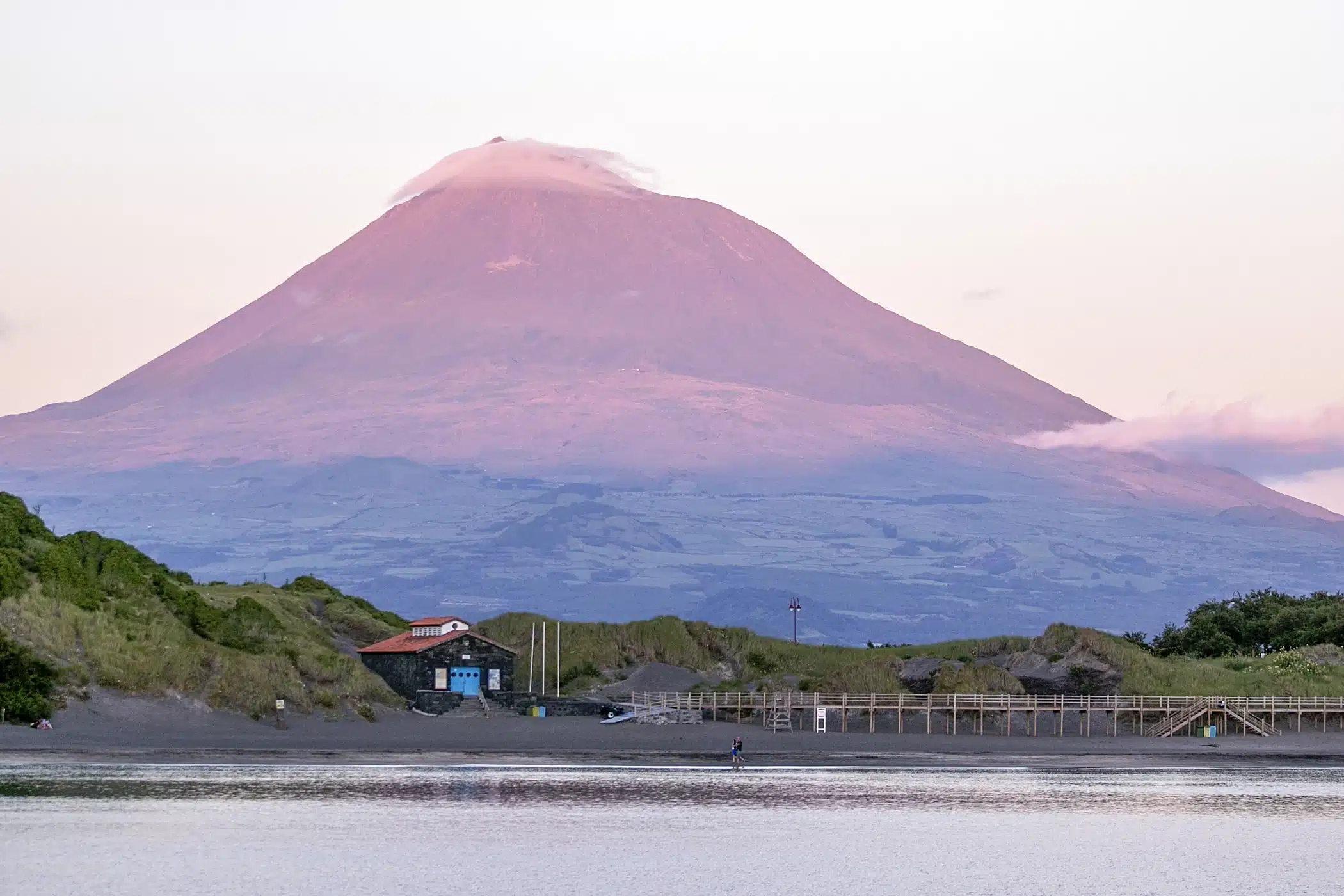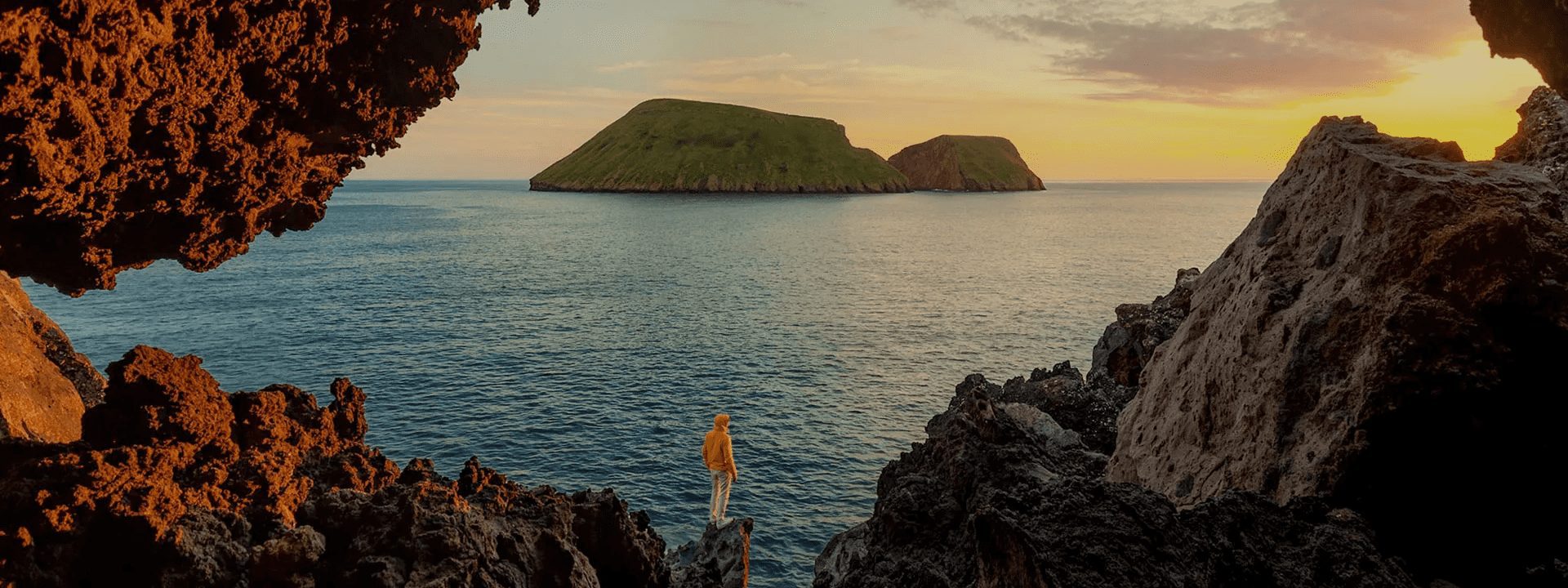Located in the center of the island, Caldeira do Faial is considered by many to be Faial’s landmark. It is one of the few places where it is still possible to imagine what the Azores were like before the archipelago was settled.
The Caldeira do Faial, also known simply as the Caldeira, is a perfectly circular caldera with an inner edge diameter of approximately 2 km and a depth of 400 meters. It is located inside the crater of the Caldeira Central Volcano.
This site, categorized as a nature reserve, is covered in lush laurel vegetation and is of great importance for the natural conservation of the Azores’ endemic habitats. So, to help you learn about this natural wonder, we’ve prepared a guide with the most relevant information and some tourist attractions you can’t miss during your stay in Faial.
What is Caldeira do Faial
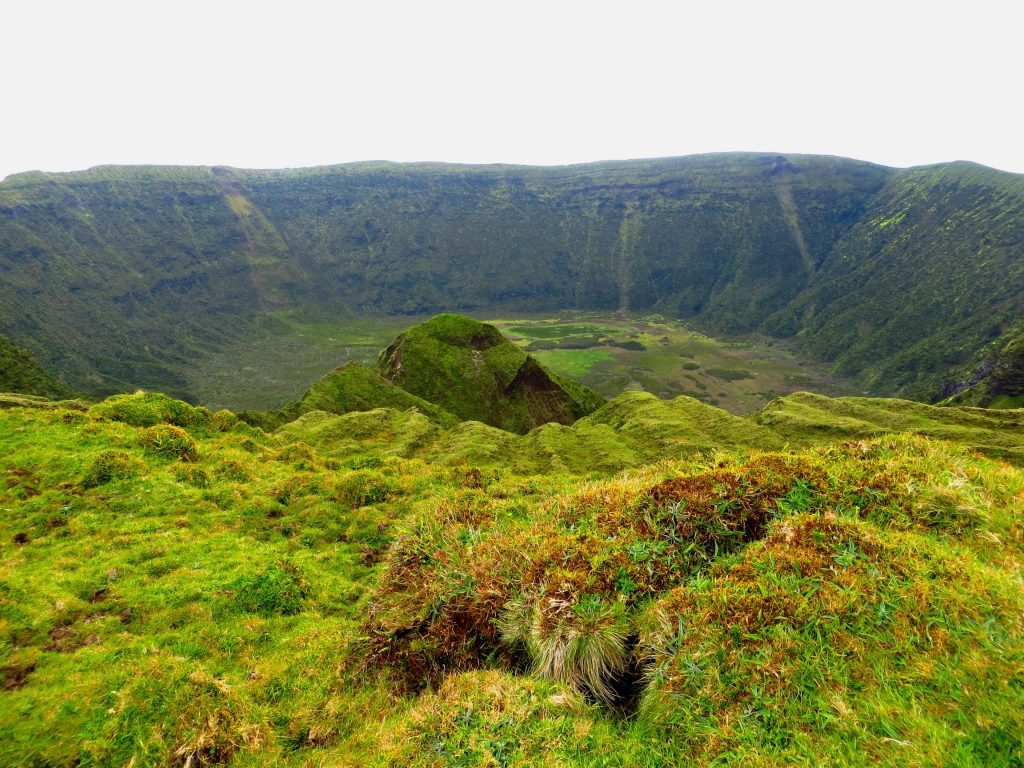
Caldeira do Faial is the youngest collapsed caldera in the Azorean archipelago—it’s been around for 1,000 years. It consists of an immense pit covered in green vegetation, with a small lagoon at the bottom, which can be glimpsed through the fog that is almost always present.
Commonly known as the Cathedral of Silence, the Caldeira is located in the center of the island, more specifically inside the Faial Natural Park, in the parish of Cerdos, in the municipality of Horta.
Due to the richness of the vegetation inside Caldeira do Faial, this natural monument is part of the Special Conservation Zone (ZEC) and the Special Protection Zone (ZPE) of Caldeira and Capelinhos within the Natura 2000 Network. It is also classified as a Ramsar Site under the Ramsar Convention and is a geosite of the Azores Geopark — UNESCO World Geopark.
Geology & Volcanology
The Caldeira do Faial is an imposing volcanic edifice that dominates the island’s landscape, with its crater formed over 400,000 years by eruptions interspersed with periods of calm. This natural monument is also the most essential geosite on the island of Faial, with excellent scientific, educational, and tourist value.
Covered by woods and laurel forest, the Caldeira has a small slag cone inside and a trachytic lava dome known as Rocha do Altar. At the bottom of the crater, a small pyroclastic cone left over from a later eruption marks the landscape.

Surrounding the Caldeira are volcanic cones (the Cabeços dos Trinta, Cabeços dos Verde, Cabeços da Fonte, Cabeços do Fogo, and Cabeços do Canto) that extend to the west. In contrast, the prominent Cabeço Gordo extends southward.
A permanent lagoon that once occupied the Caldeira disappeared during a seismic crisis in 1958, associated with the eruption of the Capelinhos Volcano, resulting in a small phreatic explosion. This caldera, the result of successive phases of volcanic subsidence, bears witness to the geological dynamics that have molded the island of Faial over millennia.
Did you know
The last eruption of this volcanic complex covered around 75% of the island’s surface with incandescent pumice.
Fauna & Flora
The first thing that strikes you when you arrive at Caldeira do Faial is the vast volcanic crater. But what is most impressive is undoubtedly the Caldeira. This place is full of flowers, plants, and trees, surrounded by a wall approximately 8 kilometers long, and is also home to a diversity of botanical habitats.

Did you know
The interior of the Caldeira is home to two-thirds of the Azores’ endemic vascular flora and the endemic fauna of Faial.
In terms of flora, the species that stand out are the cedar tree, common hawkweed, Sanicula azorica, privet, and island abaca. As far as birdlife is concerned, this site includes subspecies endemic to the Azores, such as:
- Chaffinch;
- Azorean warbler;
- kite;
- Arthropod weevil — endemic only to Caldeira do Faial.
What to Do in Caldeira do Faial
Venture out to explore the Caldeira do Faial and its 1001 shades of green that give this place its unique surroundings. Here, you can enjoy real moments of peace in communion with nature. There are three different ways to visit Caldeira:

- Enjoy the view from the belvedere into the giant volcanic crater.
- Walk around the perimeter of Caldeira do Faial.
- Descent into the interior of Caldeira do Faial.
To make your experience even more enriching, we suggest some activities you can do during your visit to this natural monument below.
Discover the Interior of Caldeira do Faial

Descending into the Caldeira do Faial is a transcendental experience. Here, we can feel the heartbeat of the island. The descent is imbued with a mystical aura, exalted by the grandeur of the environment and the sensation of entering a place practically untouched by man.
The complex ecosystem that thrives inside the Caldeira represents one of the best-preserved strongholds of endemic flora in the Azores, with its lush laurel forest. The Caldeira’s monumental scale offers a unique setting for observing these rare and sensitive species.
It should be noted that the route to the interior of the Caldeira is considered complex due to its narrow, steep nature. In this sense, in some areas, it is even necessary to use your hands to make progress.
Quick Info
The Caldeira is a humid habitat; it is common to find mud and flooded areas at its bottom, further enhancing the sense of adventure and connection with nature.
Information About the Caldeira Hiking (Summary)
This hiking trail is part of the Caldeira do Faial Nature Reserve and surrounds the crater of the ancient Central Volcano of Faial. We recommend starting the walk at the Caldeira Viewpoint, going through a small tunnel that provides access to the crater, and enjoying the exuberant view over the magnificent Laurissilva forest.
Along the way, you can admire examples of endemic flora, such as the Cedro-do-mato, the Urze, the Uva-da-serra, the Trovisco-macho, and the Angélica, among others. As you make your way around the Caldeira, you’ll enjoy panoramic views of the north and west coasts of the island, as well as the interior of the crater.
- Category: circular;
- Difficulty: easy;
- Length: 6.8 km;
- Average time: 2h30m.
Go on an Adventure on Rota dos Dez Vulcões Trail
Walking the Rota dos Dez Vulcões Trail (PR06 FAI) is the ideal experience for you if you enjoy constant contact with nature. Located in Faial, this is a walking route you can’t miss on your visit to the island.

Did you know
This linear circuit is 19.3 kilometers long and is of high difficulty. For this reason, you should always consider your physical fitness and the level of demand for the activity.
Given how demanding the trail is, it’s best to dedicate a full day to it to enjoy the experience fully. The effort will be rewarded with stunning volcanic landscapes, culminating in the Capelinhos Volcano.
Choose to start the Rota dos Dez Vulcões Trail in the caldera area so that the route is always downhill. Please note that you should only set off if the weather is good.
Information About Rota dos Dez Vulcões Trail (Summary)
- Category: linear;
- Difficulty: hard;
- Extension: 19.3 km;
- Time average: 5h.
Explore the Caldeira do Cabeço Gordo

Located in the southern part of the Caldeira do Faial, Cabeço Gordo is the highest point on Faial Island at approximately 1043 meters above sea level. It is located in the parish of Capelo, in the municipality of Horta.
From the Cabeço Gordo viewpoint, you’ll have an excellent panoramic view over the heart of the island with its enchanting green landscape. In addition, from here, you can see the highest point in the country, the 2351-metre-high Pico Mountain.
The Caldeira do Cabeço Gordo is one of Faial’s prominent landmarks. From here, you can see the historical change that took place after the eruption of the Capelinhos Volcano, as well as its arid and rustic landscape, a gray patch on a predominantly green island. It is a territory of significant historical, scientific, cultural, and tourist value in the Azores.
Plan Your Visit to Caldeira do Faial

What to Bring
Have you planned your visit to Caldeira do Faial? It’s time to find out which items we consider essential and which you can’t do without if you want your experience to be the best it can be. In this regard, we recommend that you wear comfortable clothing and footwear suitable for the trails you will follow to your destination. You should also take a rucksack with you: extra warm clothing, a waterproof or windbreaker, a camera to capture moments, sun cream, some snacks, and water.
Note: Respect the environment and follow the local rules.
How to Get to Caldeira do Faial
Leaving the city of Horta in the direction of the parish of Cerdos, you’ll have to travel around 16 kilometers to reach the beautiful Caldeira do Faial. You have several options for getting to your destination: car/motorbike, taxi, or bicycle.
Quick Info
Many routes are available, so you can take the alternative that suits you best. Journey time varies depending on the route you select.
Following the EN2-2A, the journey takes approximately:
- Car, motorbike, or taxi: 25 minutes;
- Bicycle: 1 hour and 53 minutes.
In any case, if you like long walks, you can select to make this journey on foot, following the EN2-2A, although it will take you (on average) 4 hours and 5 minutes to reach your destination.
Planning a trip to the Azores? These articles will help you: How to Get to the Azores 🗺️ | Azores airports 🛬 | Flights between islands ✈️ | Ferries between islands ⛴️ | Which island to choose? 🏝️ | What airlines fly to the Azores? 🛩️
Pro Tips
- There is a trail that leads down to the caldera, but access is restricted because the site is located within the Faial Nature Park.
- Access to the interior of the Caldeira is permitted only in the company of a Certified Faial Natural Park Guide. This activity may cost up to 50 euros per person.
- The slopes of the Caldeira are not very accessible, and it is not advisable to descend inland on rainy days.
- If you would like to cycle up to Caldeira, you can do so on the EN2-2A — the road is all tarmac. However, be aware that Azorean roads are steeper than those on the mainland, so you’ll need to be in good physical shape to endure this almost two-hour ride.
Where to Eat
If you need somewhere to eat near Horta, click here. In this link, you’ll find the 10 best restaurants on TripAdvisor.
Where to Stay
To make your life easier, we’ve filtered the search by:
Nearby Attractions
Discover Vulcão dos Capelinhos

The Vulcão dos Capelinhos, also known as the Mystery of Capelinhos, is located at Ponta dos Capelinhos in the parish of Capelo, Faial. Due to its scenic beauty, it is one of the Azores’ most popular tourist attractions.
It is part of the Capelo Volcanic Complex and exhibits a Volcano-Tectonic alignment with a general WNW-ESE orientation. Furthermore, it is composed of approximately twenty volcanic cones. The name ‘Vulcão dos Capelinhos’ alludes to the existence of two islets called ‘Ilhéus dos Capelinhos’ located in front of the Capelinhos Lighthouse.
Quick Info
Its activity lasted for thirteen months, and multiple volcanic eruptions occurred between September 27, 1957, and October 24, 1958.
Discover the Town of Horta In Faial


The city of Horta, located on the island of Faial, is one of the most emblematic places in the Azorean archipelago and should be included in your trip. Here, you can watch the constant movement of boats in the harbor and sailboats moored in the marina. As well as tourists arriving from all over the world, the city and bay of Horta are among the most famous in the Azores. This is a typical Azorean city where you can get to know the uniqueness of its people and the various buildings steeped in the region’s history and culture.

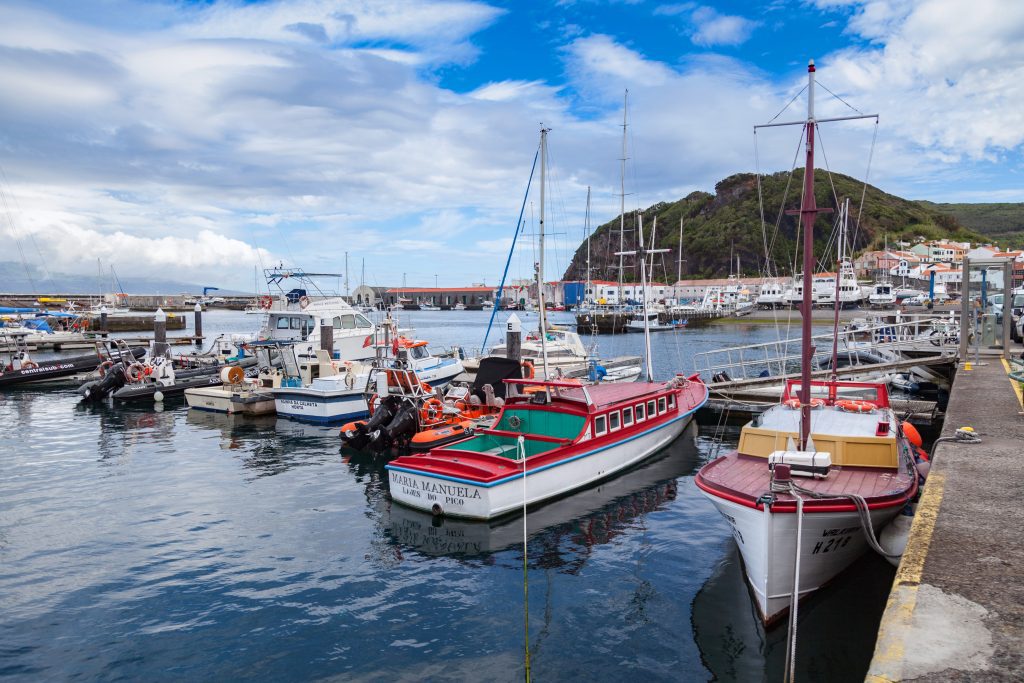
Explore Praia do Almoxarife
Praia do Almoxarife is one of the best and largest bathing areas on the island of Faial. With a privileged view of Pico Mountain, this beach is located just 5 kilometers from the city of Horta and has a long stretch of sand that its visitors much appreciate.

Did you know
Praia do Almoxarife is known for its water sports, specifically surfing, windsurfing, and diving.
Nowadays, this place has a good support infrastructure for bathers. It is equipped with access for people with reduced mobility, free car parks, toilets, showers, 2 bars, and two restaurants. You’ll also have the Praia do Almoxarife Campsite available to you.
With an average summer water temperature of 22 °C, the beach is guarded and safe, and is recognized annually with the Blue Flag — you can swim in peace.
Enjoying Praia do Porto Pim


Praia do Porto Pim, like Almoxarife Beach, is one of the most popular bathing areas on the island of Faial. Here, you’ll find good support facilities for bathers, including toilets, showers, bars, cafés, and restaurants equipped with access for people with reduced mobility.
The sand, about 350 meters long, is delicate and soft. In summer, its waters are usually around 22 °C. In addition, they are calm and have little swell, which is why they are popular for windsurfing and diving. It should be noted that Porto Pim Beach is monitored and safe, and is annually recognized with the Blue Flag for being an excellent bathing area in terms of cleanliness, hygiene, and safety.
Dive Into the Natural Pools of Varadouro
Varadouro is a small coastal resort. In the past, it was the preferred destination for wealthy families in Horta for summer vacations. However, currently, despite still being a summer resort known for its natural pools, it is also a residential area.

The Natural Pools of Varadouro, located in Fajã do Varadouro, in the parish of Capelo, are a great place to relax and enjoy the pools on hot summer days. Surrounded by exceptional scenery, the Natural Pools of Varadouro offer a unique experience that pleases both young and old.
Quick Info
You can choose between the enclosed pools — ideal for children — or the open sea.
Visit Scrimshaw Museum & Peter Café Sport
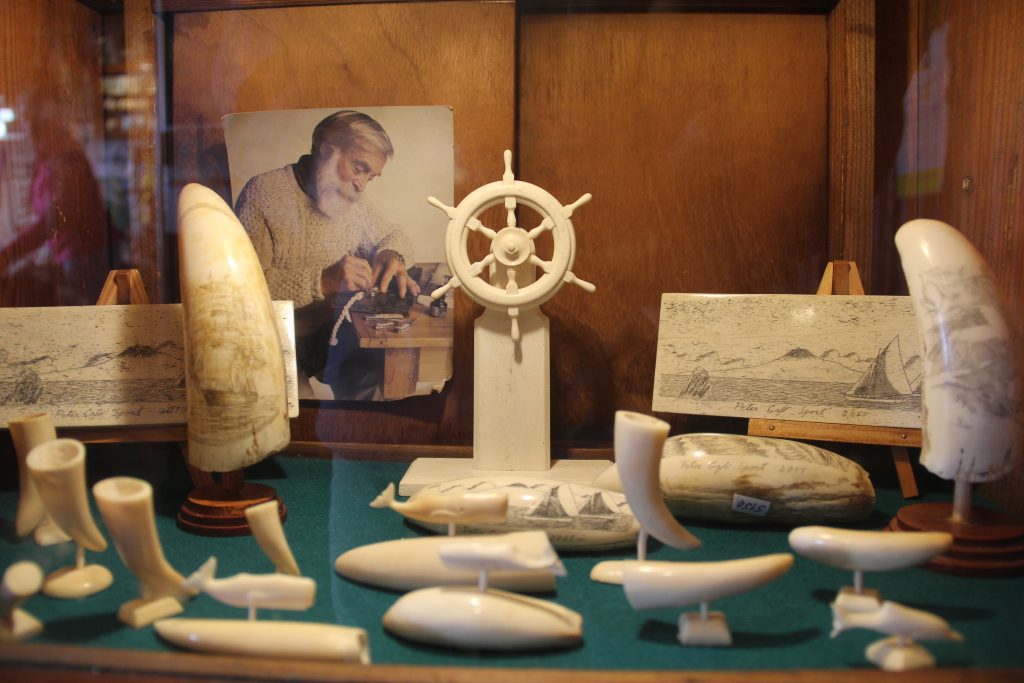
The Scrimshaw Museum, founded in 1986, is a must-see on your visit to Faial. This small museum is a little bigger than a room and is located on the first floor of the Peter Café Sport building. This museum houses many pieces meticulously sculpted by local artisans who, through whaling art, have immortalized the historical era of whaling on the islands of Faial and Pico.
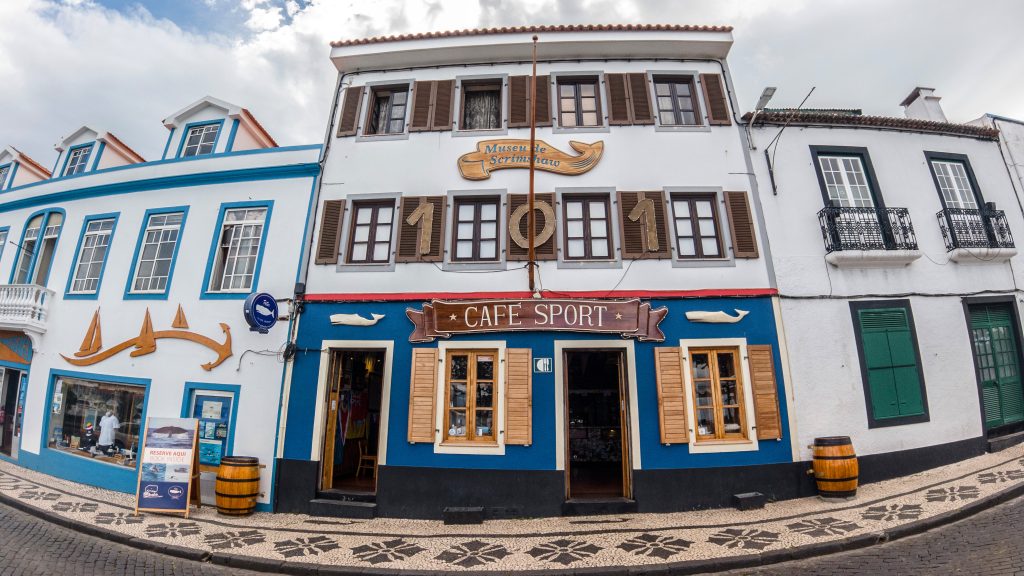

Peter Café Sport, meanwhile, is one of the world’s best-known nautical centers. It opened more than 100 years ago, in 1918, during the First World War. This emblematic space, steeped in history, is therefore considered a must for sailors, visitors, and locals alike.
Check all our articles about each one of the most relevant points of interest on Faial Island: Caldeira do Faial | Porto Pim | Capelinhos Volcano | Praia do Almoxarife | Piscinas Naturais do Varadouro
Complementary Information
Best Season to Visit the Azores
The Azores Archipelago boasts a unique climate that shapes its lush landscapes, making it a splendid year-round destination. With mild temperatures and minimal fluctuations, each season offers something unique. Spring averages 16 °C, summer reaches 21 °C, autumn cools to 18 °C, and winter remains mild at 14 °C.
→ For a detailed breakdown of the weather by month, check the following links 🌤️☔️: January | February | March | April | May | June | July | August | September | October | November | December
How to Get to the Azores
The Azorean Archipelago is easily accessible through numerous flight routes. Lisbon and Porto are the main entry points to the continent, with direct flights available to São Miguel (PDL), Terceira (TER), Faial (HOR), Pico (PIX), and Santa Maria (SMA). To find the best flight, use search engines like eDreams or Skyscanner. These platforms let you compare prices and schedules from multiple airlines in one convenient location.
For more details on how to get to the Azores, take a look at our complete guide. But what if you want to explore beyond your arrival island? We’ve got you covered!
- Azores airports 🛬
- Flights between islands ✈️
- Ferries between islands ⛴️
- Which island to choose? 🏝️
- What airlines fly to the Azores? 🛩️
→ Once you’ve found the perfect route, book your tickets and get ready to experience one of the world’s most stunning island groups!
Travel Essentials
Essential Information for your Azores trip: Azorean Language & Phrases 🗣️ | Currency & Banks 💵 | Credit Cards & Traveler’s Cheques 🏧 | Driving in the Azores 🚗 | Electricity 🔌 | Experiences & Tours 🗺️ | Health & Safety 🩺 | Internet & Wi-Fi Access 🛜 | Phones & Mobile Service 📞 | Post Offices & Buying Stamps ✉️ | Public Holidays 🏖️ | Shopping 🛒 | Time & Daylight 🕒 | Whale Watching Guide 🐳 | Best Island to Visit 🏞️
Useful Tools & Apps
The weather in the Azores can be variable, so it’s helpful to use some apps before visiting the islands. Spotazores provides live camera feeds from the main tourist attractions, allowing you to check the weather and plan your visit. For accurate weather predictions, use Windy or Windguru — they provide the most reliable predictions.
Video
Conclusion
Caldeira do Faial, located in the parish of Cerdos, is a place worth visiting for those who enjoy being in communion with nature. It is part of a nature reserve of great importance in the Azores, and the view from the Cabeço Gordo Viewpoint is considered a must-see.
If you’re looking for a quiet and peaceful place in Faial, then Caldeira, also known as the deserted center of the island, could be the ideal destination for those who want to relax and get away from the daily hustle and bustle of the cities.
Remember to visit the area surrounding Caldeira do Faial. Take the opportunity to discover monuments, the municipality of Horta’s historical and cultural legacy, viewpoints with breathtaking views, and various natural places of interest.
Authors’ Note
I am pleased to inform you that all the recommendations in this article are based on my personal experience and observations. As the author, I have personally visited each attraction mentioned, ensuring that every suggestion is grounded in first-hand knowledge and genuine enthusiasm.
FAQs
Caldeira do Faial is a volcanic caldera in the center of Faial Island. It measures approximately 2 kilometers in diameter and reaches depths of about 400 meters. The caldera is enveloped by dense Laurisilva forest, providing a rich habitat for endemic flora and fauna.
Visitors can embark on the Perimeter of Caldeira trail, a 7-kilometer loop that encircles the caldera’s rim. This medium-difficulty trail offers panoramic views of the surrounding landscape and insights into the area’s unique geology.
Beyond its geological importance, Caldeira do Faial serves as a sanctuary for endemic species, preserving the island’s original flora and fauna. Its rich biodiversity and unique ecosystem make it a valuable site for ecological studies and nature enthusiasts.
Yes, the Casa do Cantoneiro, a restored former road maintenance shelter, now functions as an interpretation center. It provides information about the caldera’s flora, fauna, geology, and available hiking trails, enhancing the visitor experience.





